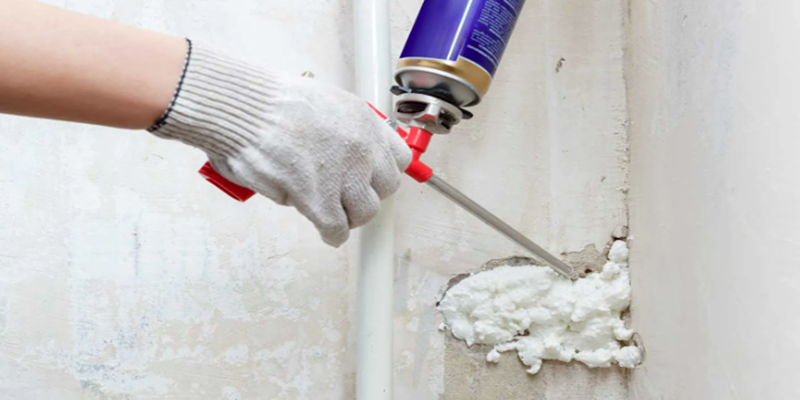Spray Polyurethane Foam (SPF) is a versatile, energy-efficient insulation material that has gained widespread use in residential, commercial, and industrial applications. SPF is a type of rigid polyurethane foam, created by spraying a mixture of isocyanates and polyols that react and expand upon contact to form a foam. SPF provides superior thermal insulation, moisture resistance, and durability, making it an excellent choice for insulation in buildings, roofs, pipes, and more.
What is Spray Polyurethane Foam?
Spray Polyurethane Foam (SPF) is a two-component system made from isocyanate and polyol. When combined, these components undergo a chemical reaction that creates a foam that expands rapidly to fill gaps, cracks, and cavities. The resulting foam has an excellent insulating ability due to its low thermal conductivity, which helps reduce energy consumption by preventing heat transfer. Additionally, SPF forms a seamless barrier, preventing moisture from seeping into walls and ceilings, reducing the risk of mold growth.
SPF is highly customizable and can be sprayed onto virtually any surface, including walls, roofs, and foundations. It is also known for its high R-value (thermal resistance), making it a superior choice for energy-efficient buildings. SPF is ideal for both new construction and retrofit applications.
The Role of Polyurethane Catalysts in SPF
The formation of SPF is a complex process that requires precise control over the chemical reaction between the isocyanate and polyol components. Polyurethane catalysts are key in this process, accelerating the reaction and controlling the foam’s rise and curing characteristics. These catalysts play a crucial role in determining the foam’s final properties, such as density, strength, and insulation performance.
Polyurethane catalysts work by speeding up the reaction between the isocyanates and polyols, ensuring that the foam rises and cures at the right speed. If the reaction occurs too quickly, the foam may rise unevenly or create defects. Conversely, if the reaction is too slow, the foam may not cure properly, compromising its strength and insulating properties. The right catalyst ensures a smooth, controlled reaction that results in a high-quality foam.
There are two main types of polyurethane catalysts used in SPF: amine-based catalysts and tin-based catalysts. Amine-based catalysts, which are commonly used in modern SPF formulations, offer several advantages, including lower odor and lower environmental impact compared to their tin-based counterparts.
Key Polyurethane Catalysts in SPF Formulations
Several specialized polyurethane catalysts are commonly used in SPF formulations to achieve optimal performance:
- MXC-T: An emission-free, low-odor amine catalyst, MXC-T is known for its high foaming activity and smooth rise profile, making it ideal for SPF applications where minimal odor and high performance are crucial.
- MXC-37: A catalyst suitable for systems with high water content, MXC-37 promotes uniform foam formation while maintaining excellent rise control, making it ideal for high-density spray foam insulation.
- MXC-TMA: This catalyst promotes the trimerization of polyisocyanurate, helping to achieve a smooth, controlled rise and cure profile, which is essential for SPF used in roofing and insulation.
- MXC-B20: MXC-B20 is a co-catalyst that works alongside other catalysts to accelerate the curing of the foam, ensuring a strong, durable finish. It is particularly effective in high-density foam systems.
These catalysts provide essential control over the foam’s properties, ensuring that the SPF forms uniformly, with the correct density, stability, and insulation performance. Additionally, the use of low-emission, low-odor catalysts like MXC-T is increasingly important as environmental regulations tighten and demand for safer, greener building materials rises.
Conclusion
Spray Polyurethane Foam (SPF) is a highly effective insulation material, offering exceptional thermal resistance, moisture control, and durability. The use of specialized polyurethane catalysts in SPF formulations is critical to ensuring the foam performs as expected, with a smooth rise, controlled curing, and optimal insulation properties. With the growing emphasis on energy-efficient, environmentally friendly building materials, SPF and its associated catalysts continue to be an essential part of modern construction and insulation systems.
Post time: Jan-21-2025

